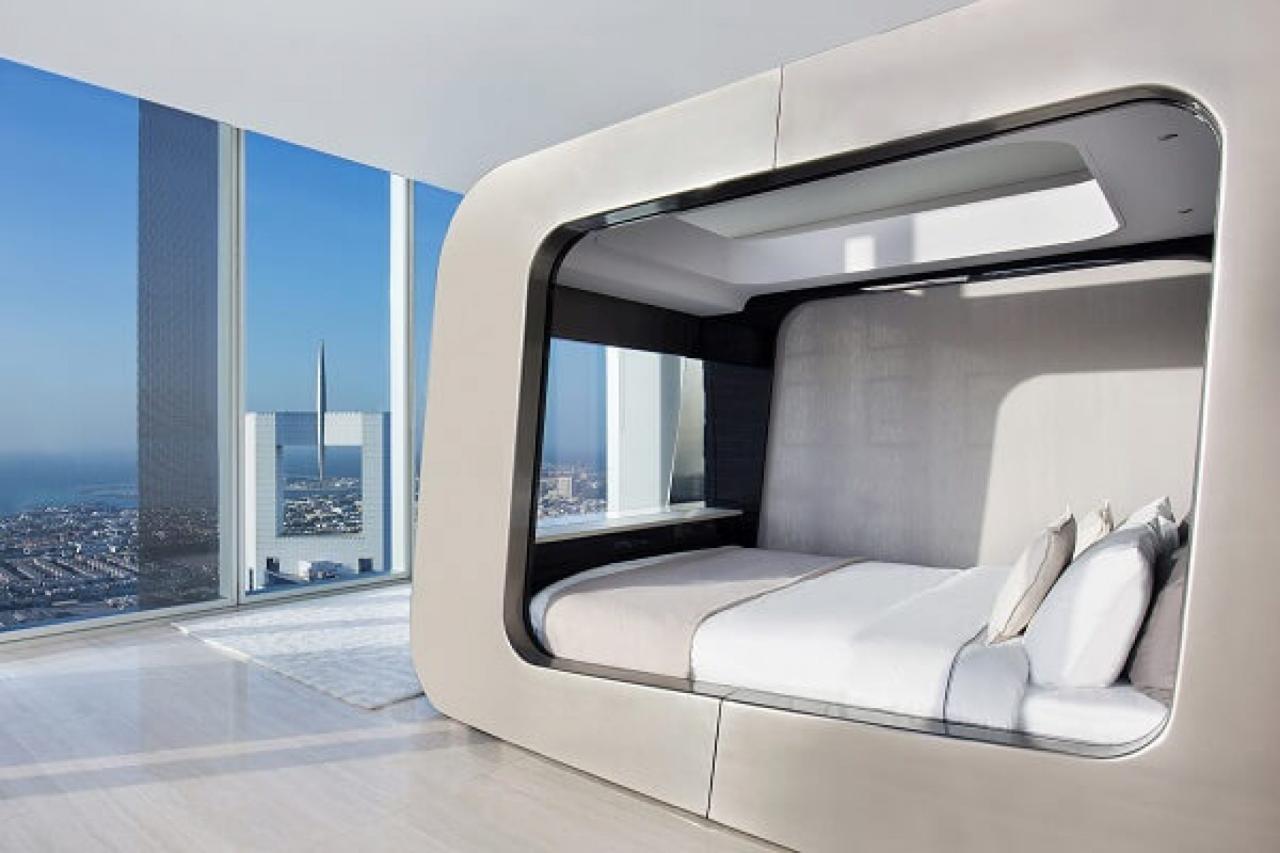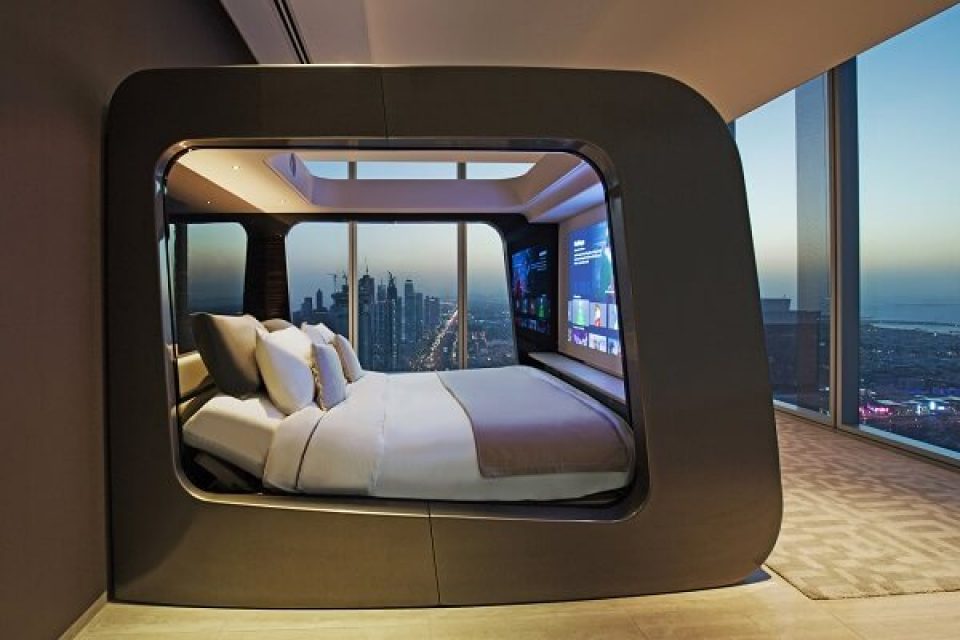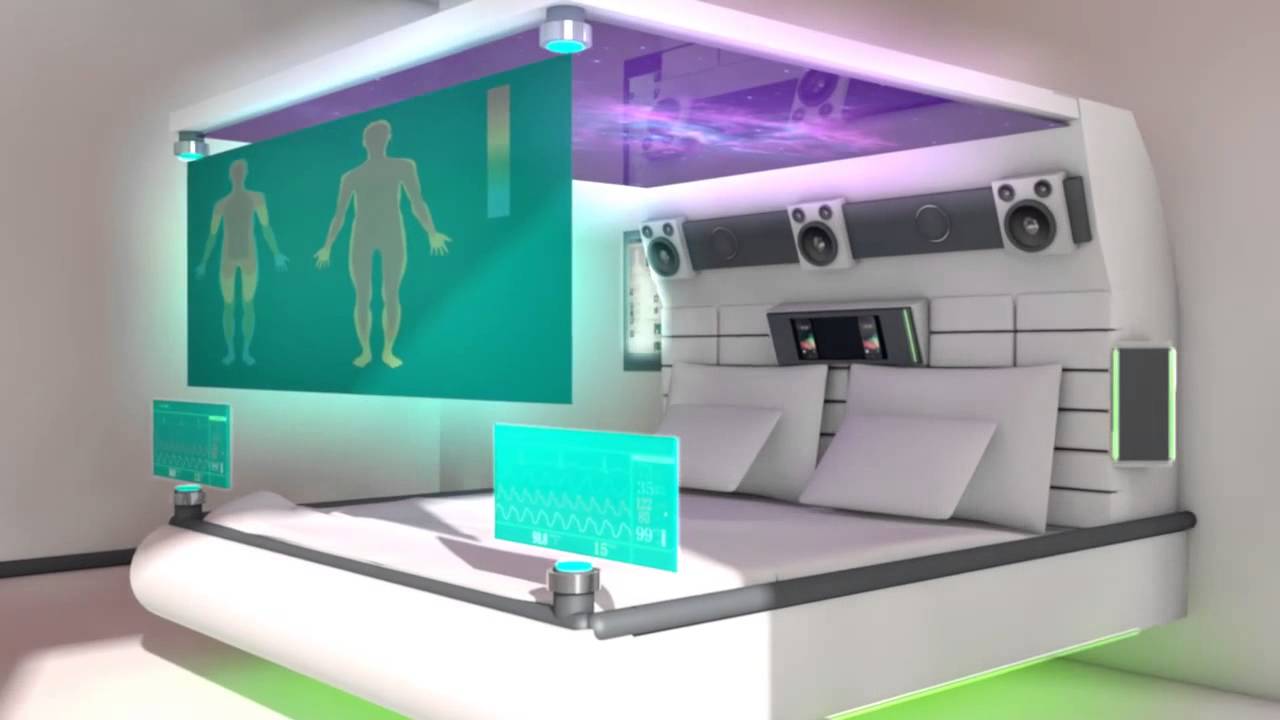Technology Beds: The Future of Sleep
Technology beds are revolutionizing sleep, taking us beyond traditional beds and into a world of comfort, health, and personalized sleep experiences. These beds are not just for lounging; they’re designed […]

Technology beds are revolutionizing sleep, taking us beyond traditional beds and into a world of comfort, health, and personalized sleep experiences. These beds are not just for lounging; they’re designed to enhance our sleep quality, alleviate pain, and even contribute to overall well-being.
Imagine a bed that senses your body temperature, adjusts its firmness to your preferences, and even tracks your sleep patterns to provide personalized insights. This is the reality of technology beds, and they’re becoming increasingly sophisticated with advancements in sensors, algorithms, and smart home integration.
Features of Technology Beds

Technology beds are more than just a place to sleep; they are innovative pieces of furniture designed to enhance sleep quality, comfort, and overall well-being. These beds incorporate various technological advancements to personalize the sleep experience and cater to individual needs.
Adjustable Bases
Adjustable bases are a core feature of technology beds, allowing users to customize their sleeping position for optimal comfort and support.
An adjustable base can be raised or lowered at the head and foot, creating different positions for reading, watching TV, or simply relaxing.
This feature can be particularly beneficial for individuals with back pain, neck pain, or other medical conditions.
- Zero Gravity Position: This position mimics the feeling of weightlessness, reducing pressure on joints and promoting blood circulation. It can be particularly helpful for individuals with back pain or circulatory issues.
- Anti-Snoring Position: Raising the head of the bed can help to open up the airways, reducing snoring.
- Leg Elevation: Elevating the legs can help to improve blood circulation and reduce swelling in the feet and ankles.
Sleep Tracking
Sleep tracking technology embedded in technology beds monitors sleep patterns and provides valuable insights into sleep quality.
These beds often use sensors to measure heart rate, breathing rate, movement, and sleep stages.
The collected data is analyzed by algorithms to generate detailed sleep reports, providing users with information about their sleep duration, sleep cycles, and sleep disturbances.
- Sleep Stage Monitoring: Technology beds can track different sleep stages, including light sleep, deep sleep, and REM sleep, offering insights into the quality and efficiency of sleep.
- Sleep Disturbance Detection: These beds can detect sleep disturbances such as snoring, restless leg syndrome, and sleep apnea, helping users identify potential sleep issues and seek appropriate solutions.
- Personalized Sleep Recommendations: Based on the collected sleep data, technology beds can provide personalized recommendations for improving sleep habits and optimizing sleep quality.
Heating and Cooling Systems
Some technology beds incorporate heating and cooling systems to regulate body temperature for optimal sleep comfort.
These systems can use integrated heating elements or cooling pads to adjust the bed’s temperature based on the user’s preference.
Maintaining a comfortable temperature during sleep is crucial for achieving restful sleep.
- Temperature Regulation: Heating and cooling systems help maintain a consistent temperature throughout the night, preventing overheating or chills that can disrupt sleep.
- Personalized Comfort: Users can customize the temperature settings according to their individual preferences, ensuring optimal comfort throughout the night.
- Improved Sleep Quality: By regulating body temperature, these systems can promote deeper sleep and reduce sleep disturbances.
Massage Features
Certain technology beds offer built-in massage features to provide relaxation and muscle relief.
These features typically involve vibrating motors or air chambers that can be adjusted to different massage intensities and patterns.
Massage can help to alleviate muscle tension, improve circulation, and promote relaxation.
- Stress Relief: Massage features can help to reduce stress and promote relaxation, contributing to a more peaceful and restful sleep.
- Muscle Tension Relief: Massage can help to alleviate muscle tension and soreness, improving sleep quality and overall comfort.
- Improved Circulation: Massage can stimulate blood flow, promoting circulation and reducing muscle fatigue.
Integrated Lighting
Technology beds may incorporate integrated lighting systems to create a relaxing and personalized sleep environment.
These systems often include adjustable bedside lamps, under-bed lighting, and even ambient lighting that can be controlled via a remote or a smartphone app.
Integrated lighting can enhance sleep quality by creating a calming atmosphere and reducing the need for disruptive nighttime trips to the bathroom.
- Sleep-Promoting Atmosphere: Soft, dim lighting can help to create a calming atmosphere conducive to sleep.
- Nighttime Navigation: Under-bed lighting can provide a safe and convenient way to navigate the room at night without disrupting sleep.
- Personalized Lighting Control: Users can customize lighting settings to suit their individual preferences and needs.
Types of Technology Beds

Technology beds offer a range of functionalities and features that cater to different needs and preferences. They can be broadly categorized into smart beds, adjustable beds, and therapeutic beds.
Smart Beds, Technology bed
Smart beds are equipped with advanced technology that enhances comfort, convenience, and sleep quality. They often incorporate features like automatic adjustments, sleep tracking, and integration with smart home devices.
- Automatic Adjustments: Some smart beds allow users to adjust the bed’s position, including head and foot elevation, using a remote control or a mobile app. This can improve comfort and support for reading, watching TV, or reducing snoring.
- Sleep Tracking: Smart beds can monitor sleep patterns, including sleep duration, sleep stages, and heart rate. This data can be used to analyze sleep quality and identify potential sleep problems.
- Smart Home Integration: Smart beds can connect with other smart home devices, such as voice assistants, smart lights, and thermostats. This enables users to control the bed’s features and other home appliances with ease.
Examples of Smart Beds:
* Sleep Number 360 Smart Bed: This bed offers personalized comfort with adjustable firmness and sleep tracking features. It also integrates with smart home devices.
* Eight Sleep Pod Pro: This smart bed features temperature regulation technology that allows users to control the bed’s temperature for optimal sleep. It also includes sleep tracking and smart home integration.
Pros:
* Enhanced Comfort: Smart beds offer personalized comfort and support through adjustable features and temperature regulation.
* Improved Sleep Quality: Sleep tracking and analysis can help identify and address sleep problems.
* Convenience: Smart beds can be controlled remotely and integrated with other smart home devices.
Cons:
* Higher Cost: Smart beds are typically more expensive than traditional beds.
* Technology Dependence: Smart beds rely on technology, which can be prone to malfunctions or updates.
* Privacy Concerns: Sleep tracking data can raise privacy concerns.
Adjustable Beds
Adjustable beds offer customizable comfort and support by allowing users to adjust the head and foot positions. This can be beneficial for individuals with back pain, acid reflux, or other health conditions.
- Head and Foot Elevation: Adjustable beds allow users to raise the head and foot sections to create different sleeping positions. This can improve comfort and reduce pain.
- Zero Gravity Position: Some adjustable beds offer a zero gravity position, which reduces pressure on the spine and promotes blood circulation.
- Massage Features: Some adjustable beds incorporate massage features that can provide relaxation and pain relief.
Examples of Adjustable Beds:
* Tempur-Pedic Adjustable Base: This adjustable bed offers a range of adjustable features, including head and foot elevation, zero gravity position, and massage features.
* Serta iComfort Adjustable Base: This adjustable base provides customizable comfort with adjustable height and head and foot positions. It also includes a remote control for easy operation.
Pros:
* Customizable Comfort: Adjustable beds allow users to create personalized sleeping positions for optimal comfort and support.
* Pain Relief: Adjustable beds can help reduce back pain, neck pain, and acid reflux.
* Improved Circulation: Zero gravity position can promote blood circulation and reduce swelling.
Cons:
* Bulkier Design: Adjustable beds can be bulkier than traditional beds, requiring more space.
* Higher Price: Adjustable beds are generally more expensive than traditional beds.
* Limited Sleep Positions: Adjustable beds may not offer as many sleeping positions as traditional beds.
Therapeutic Beds
Therapeutic beds are designed to provide specific therapeutic benefits, such as reducing pain, improving circulation, or promoting relaxation. These beds often incorporate features like adjustable positions, massage functions, and temperature regulation.
- Pain Relief: Therapeutic beds can help alleviate pain by providing adjustable support, massage, and heat therapy.
- Improved Circulation: Certain therapeutic beds promote blood circulation by elevating the legs or using compression therapy.
- Relaxation and Stress Relief: Therapeutic beds can enhance relaxation through features like massage, aromatherapy, and light therapy.
- Improved Circulation: Certain therapeutic beds promote blood circulation by elevating the legs or using compression therapy.
Examples of Therapeutic Beds:
* Flex-a-Bed Therapeutic Bed: This bed features adjustable positions, massage features, and heat therapy to promote pain relief and relaxation.
* Restonic Therapeutic Mattress: This mattress incorporates a layer of therapeutic gel that helps regulate temperature and provide pressure relief.
Pros:
* Therapeutic Benefits: Therapeutic beds offer specific therapeutic benefits that can improve pain, circulation, and relaxation.
* Personalized Comfort: Many therapeutic beds allow for customizable positions and features to suit individual needs.
* Enhanced Sleep Quality: Therapeutic features can promote restful sleep and reduce sleep disturbances.
Cons:
* Specialized Features: Therapeutic beds may have specialized features that can be expensive or require specific maintenance.
* Limited Availability: Therapeutic beds may not be as widely available as other types of beds.
* Higher Price: Therapeutic beds are often more expensive than traditional beds.
Choosing the Right Technology Bed
Investing in a technology bed is a significant decision, requiring careful consideration of various factors to ensure a comfortable, restful, and personalized sleep experience. It’s crucial to understand your needs and preferences before diving into the world of smart beds.
Factors to Consider
Before making a purchase, carefully evaluate your budget, sleep preferences, health conditions, and desired features.
- Budget: Technology beds come in a wide range of prices, from a few hundred dollars to several thousand. Determine your budget and stick to it. Consider the long-term value and potential benefits the bed offers in relation to its cost.
- Sleep Preferences: Think about your preferred sleeping position, firmness level, and temperature. Some technology beds offer adjustable firmness, temperature control, and other features to customize your sleep environment.
- Health Conditions: If you have any health conditions, such as back pain or insomnia, consider technology beds that can address these concerns. Some beds offer features like built-in massage, sleep tracking, and even breathing assistance.
- Desired Features: Decide which features are essential for you. Do you want a bed that can track your sleep data, play music, or even adjust the room lighting? Consider the features that align with your needs and lifestyle.
Assessing Quality and Reliability
Evaluating the quality and reliability of technology bed brands and models is crucial to ensure a worthwhile investment.
- Brand Reputation: Research the brand’s reputation for quality, customer service, and product reliability. Look for reviews and testimonials from other users.
- Warranty: Check the warranty period and coverage. A longer warranty period indicates the manufacturer’s confidence in their product’s durability.
- Materials and Construction: Examine the materials used in the bed’s construction, such as the mattress, frame, and electronics. Look for high-quality materials and robust construction for longevity.
- Testing and Certifications: Check if the bed has been tested and certified by independent organizations for safety and performance. Look for certifications such as UL (Underwriters Laboratories) or other reputable organizations.
Setting Realistic Expectations
Technology beds offer a range of benefits, but it’s essential to set realistic expectations.
- Limitations: Technology beds are not a cure-all for sleep problems. They are tools that can enhance sleep quality, but they may not address underlying health conditions or sleep disorders.
- Potential Issues: Technology beds can sometimes experience technical issues, software glitches, or malfunctions. Consider the potential for troubleshooting and repair.
- Privacy and Security: Some technology beds collect personal data, such as sleep patterns and biometric information. Ensure you understand the privacy policy and data security measures implemented by the manufacturer.
Outcome Summary

Technology beds represent a convergence of comfort, technology, and health. They offer a glimpse into a future where sleep is not just a necessity but a personalized and optimized experience. As technology continues to evolve, we can expect even more innovative features and functionalities, making technology beds an essential part of a healthier and more comfortable life.
A technology bed might sound like something out of a sci-fi movie, but it’s actually a real thing! Imagine a bed that can adjust its firmness, temperature, and even play music. If you’re looking for a similar level of customization in your car, you might want to check out the VW Atlas SE vs SE with Technology comparison.
This comparison will help you decide if the extra tech features are worth the investment, just like deciding whether a technology bed is right for you.




